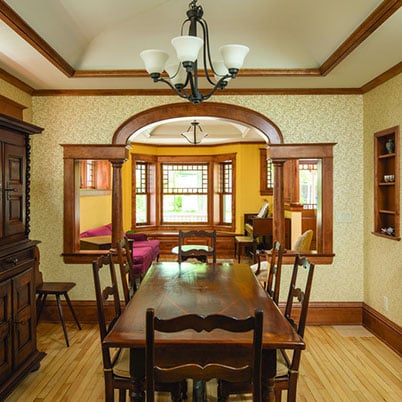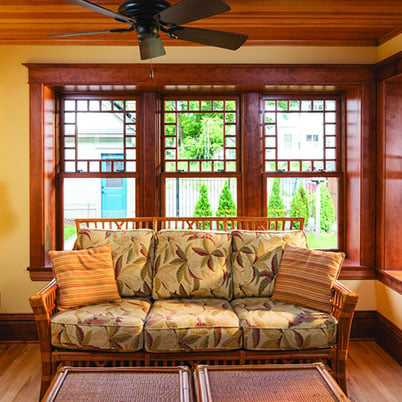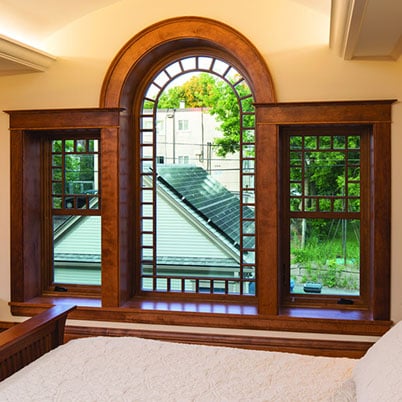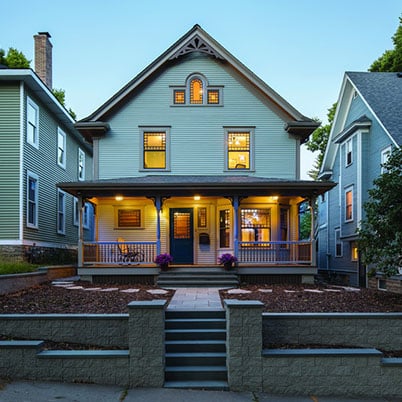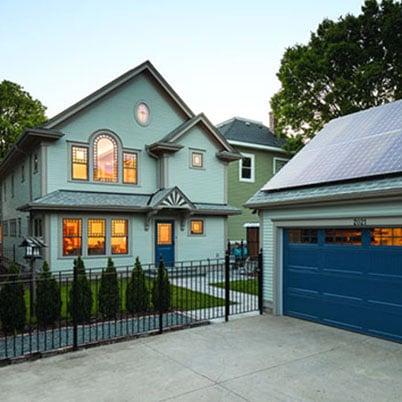Brought to you in collaboration with Metropolis magazine
Creative preservation makes this net-zero Victorian home a sustainable delight
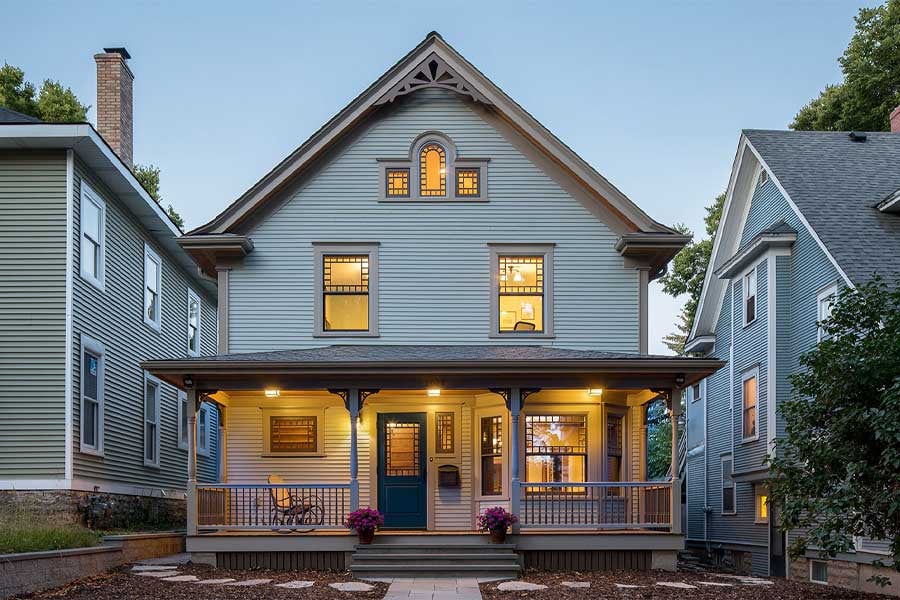
Linda Herman
With a combination of features like densely insulated walls, energy efficient historical reproduction windows, and a hybrid of preserved and new woodwork, the home has retained its strong connection to the past without compromising on beauty and modern accommodations. “The most satisfying thing about being in this house is that, even though it is an older home, it has a remarkable level of comfort,” says Herman. “No matter how hot or cold it gets outside, it is extremely comfortable for us in our retirement and, you know, older bones get sensitive to temperature.”
It was the “bones of the house,” says Marc Sloot, senior associate at SALA Architects, that guided his firm in the remodel of the home. “The house was a kind of modest Victorian. It wasn’t overly ornate,” Sloot observes. He looked in particular to its original features to show the way.
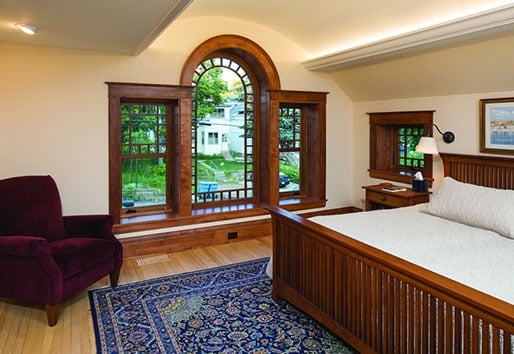
See more of the home:
“We essentially took our cues from the existing trim profiles, which have a lot of character. Then built off of those aesthetic cues to add even more, complimentary features,” Sloot says. “We embraced what was there and then took it just a little further.” Original trim, doors, and frames were removed, stripped, and refinished—the majority of which the homeowner did himself. “I had refinished things before, but never on this scale,” says Herman. “There were hundreds of feet of millwork.”
The home’s original yellow birch floors were retained on the main level, while missing sections were filled-in with floor planks from upstairs. There, new floors were in turn built with antique maple, salvaged from local demolitions. “We’ve just got this lovely millwork and cabinetry throughout the house,” enthuses Herman.
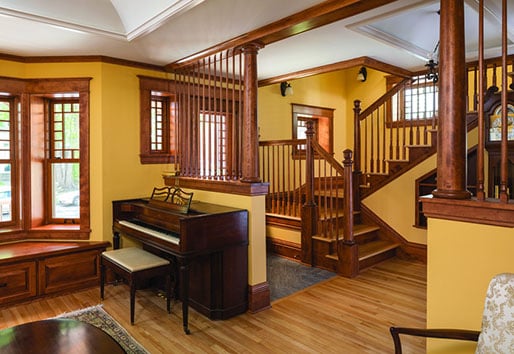
Among other creative solutions, Sloot and his team brought two of the original stained-glass windows inside. As interior partitions, and now relieved of their insulation duties, the stained glass showcases “some of the beauty and charm of the original house,” the architect says. Now, it’s the distinctive Queen Anne style windows from Andersen Windows that signal the home’s historic but delightful character. As a result, daylight now flows into the once-obscured kitchen while the family room takes in soothing views from the sunroom and the backyard.
“What’s most satisfying to me is it’s just a beautiful home that looks like it’s always been there. The advanced systems in the house are incorporated in such a way that it’s just seamless, like that was part of this house from the very beginning,” says Sloot. “The homeowners are just so happy and comfortable there. To live in a house like this, for them, it’s effortless.”
